Before losing ourselves in the history of the building, it is worth examining what the term villa denotes in Hungary. In Hungary, villas were a widespread type of historicist architecture, which became increasingly common at the turn of the 18th and 19th centuries. Its birth can be tied to romanticism's love of nature, which spread first among the aristocracy and then the bourgeoisie.
Although the need to retreat to nature from an unhealthy urban lifestyle both was characteristic of both these social classes, villas primarily remained common among the urban bourgeoisie. This is not surprising, as the aristocracy had rural castles and manors and typically spent more time in these than the city. While castles and manors were often far from larger settlements, the proximity of cities was an important aspect in the construction of villas and villa districts. Working citizens could not stay away from their jobs or businesses for too long.
According to the Architecture and Applied Arts volume of the "Hungarian art in the 19th century" series (edited by József Sisa), villa districts can be divided into two types based on their formation. The first group includes quarters that were created in predominantly agricultural areas near cities. At the beginning of the 18th century, these areas predominantly housed gardens and orchards owned by the bourgeoisie. At the time, only a small tool shed or, huts stood on the plots.
However, as part of a process that began at the end of the 18th century, the huts began to expand. Eventually, they were replaced by increasingly large buildings. By the second half of the 19th century, they had become elegant holiday homes in landscaped gardens. Svábhegy and Zugliger in Budapest are such areas, as is Lőverek in Sopron.
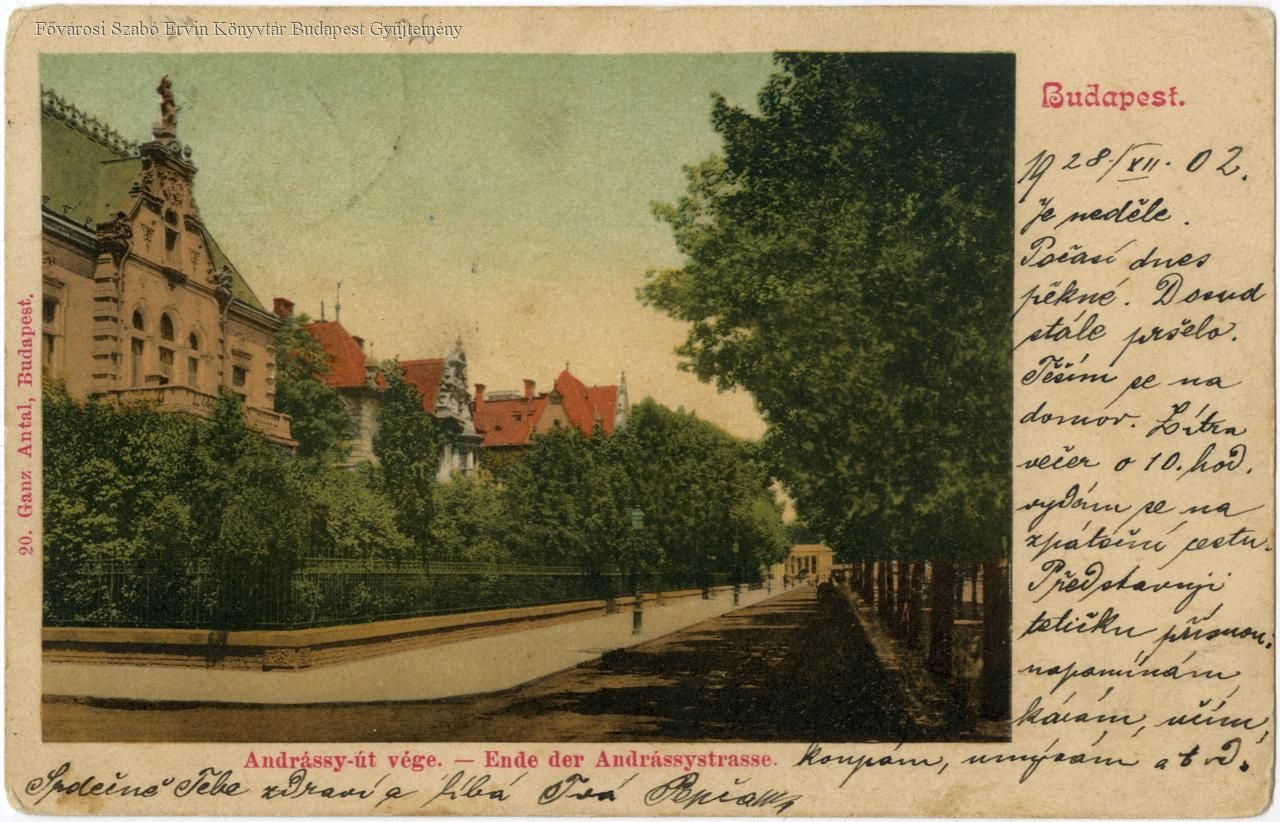
Postcard of Andrássy Avenue, 1902. The facade of the Bulyovszky villa on the left with a statue of the actress
(Source: FSZEK Budapest Collection)
The other group consists of areas that were parcelled out to form a villa district. Due to the uniform plot size, villas of similar size and style, surrounded by similar gardens, were usually built in these appealing areas. The cityscape of these areas is generally more harmonious, but less romantic than that of the first type. The latter group includes the villa district in Balatonfüred and the villas along Andrássy Avenue. The Bulyovszky villa is one of these.
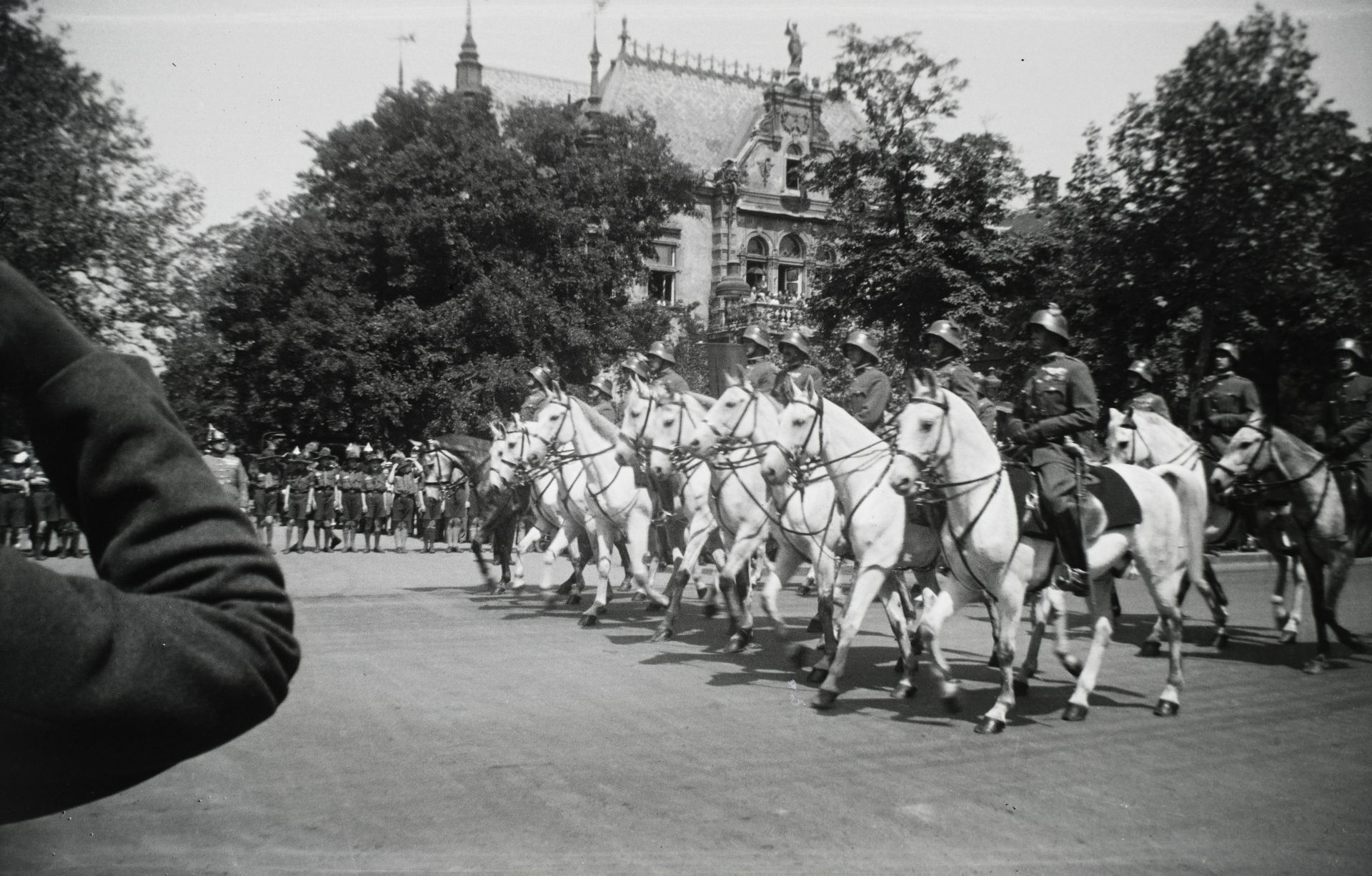
Military parade in honour of King Victor Emmanuel III. of Italy, in 1937. Bulyovszky villa visible in the background (Photo: Fortepan/No.: 120521)
The development of public transport also contributed to the growth of villa quarters. It suddenly became possible to commute to the city daily from areas that were once difficult to access. Naturally, the development of public transport also contributed to a growth in population density. As a result, the city soon surrounded the villa districts. Many of them lost their natural surroundings in the 19th century. Moreover, larger plots were at times divided into smaller ones, allowing newly erected buildings to “crawl into the gaps between the villas.
As a result, few villa districts preserve the authentic atmosphere of these areas from the 18th–19th centuries. The villa district along the outer stretches of Andrássy Avenue is one of these. As seen, villa architecture in Hungary dates back to the 19th century. Ant exploded in the second half of the century. As a result of the period, it is characterized by all styles of historicism, and different styles can often be spotted within the same district.
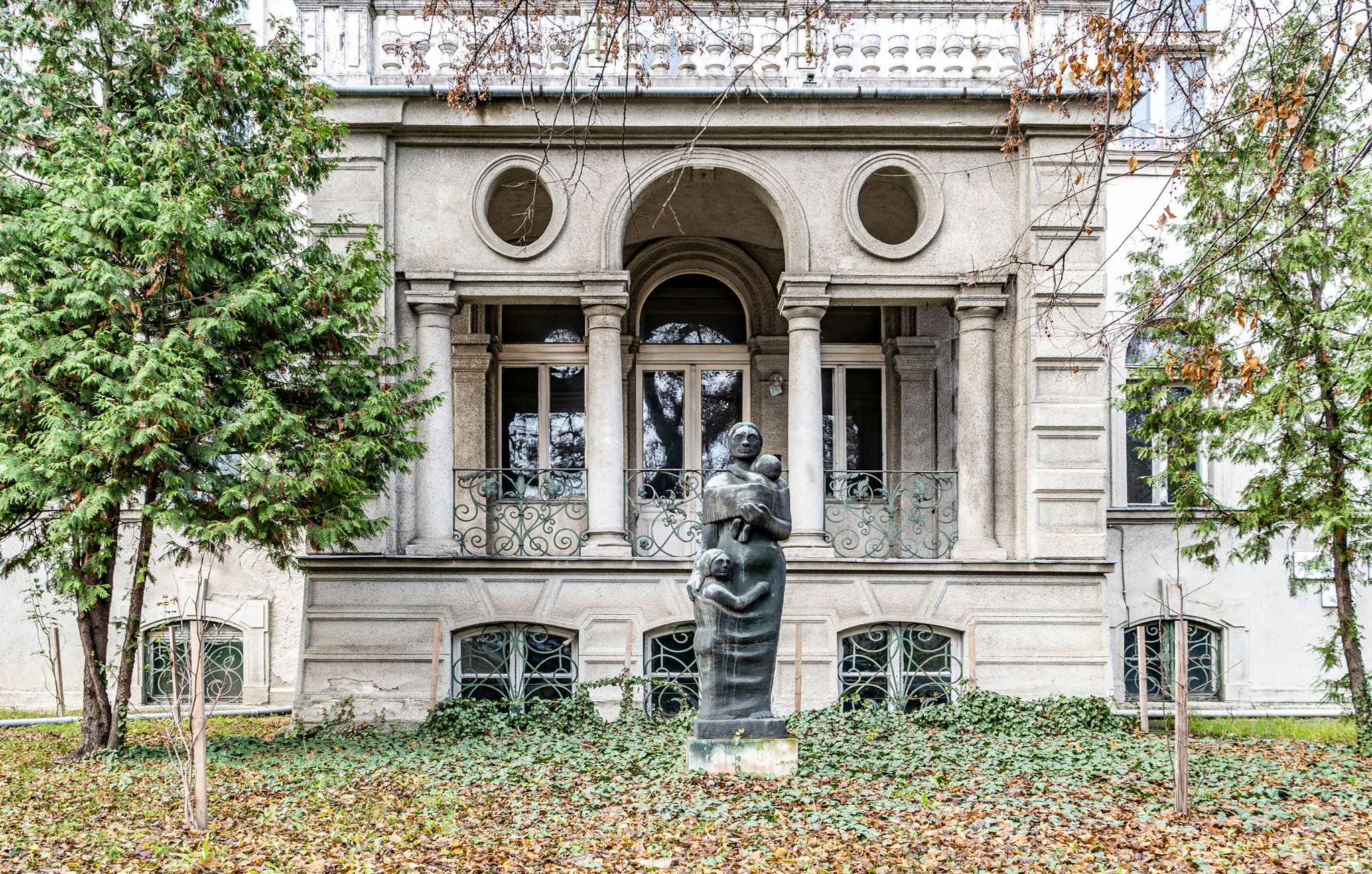
The loggia on the main façade, a statue of a mother with her children in the foreground. The statue was erected by Hungarian Women's Association (Photo: Both Balázs/pestbuda.hu)
However, the villas on Andrássy Avenue (or Sugárút 'avenue' to use its original name) were mostly built in the Italian Neo-Renaissance style represented in Miklós Ybl's work. However, the Bulyovszky villa is slightly out of line. It was built in the German Neo-Renaissance style rather than the Italian. In the following, an explanation for this choice will be explored. The building was designed by Sándor Fellner in 1884 when he was a young architect. This villa is an important milestone in the oeuvre of the architect of the Ministry of Finance on Szentháromság tér and the Ministry of Justice on Markó Street, as it was his first independent commission. One he completed to the highest standard. However, as was only starting his career, it is unlikely that he chose to make the distinction in style.
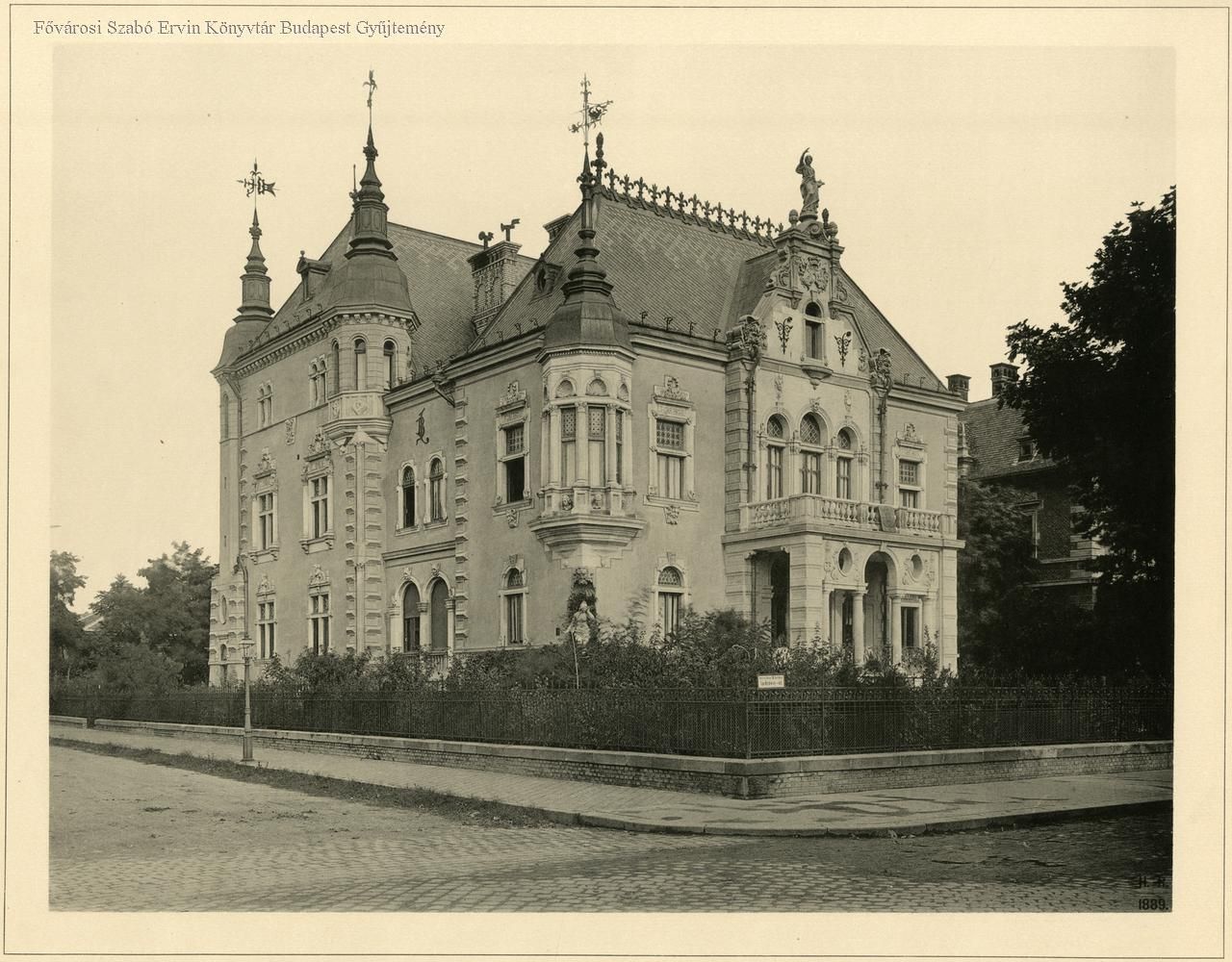
Bulyovszky Villa at 124 Andrássy út, 1889 (Photo: FSZEK Budapest Collection)
The German Neo-Renaissance style was popular in Hungary in the 1880s, mainly popularised by the work of Imre Steindl. However, as József Rozsnyai points out in his book entitled Meinig Arthur, the work of young German-speaking architects, such as Arinur Meinig or Henrik Schmahl, who moved to Hungary from German-speaking areas, also contributed to the spread of the style. They knew and copied the architecture of their homeland to perfection, making it popular. The customer herself also had a strong personal connection to the German-speaking world, and it may be that she chose to differ slightly in style.
The client, Lilla Bulyovszky née Szilágyi, was born in Kolozsvár (Cluj-Napoca, Romania) in 1833 as the descendant of a noble family of actors. She took to the stage as a young child and quickly drew attention through her outstanding talent.
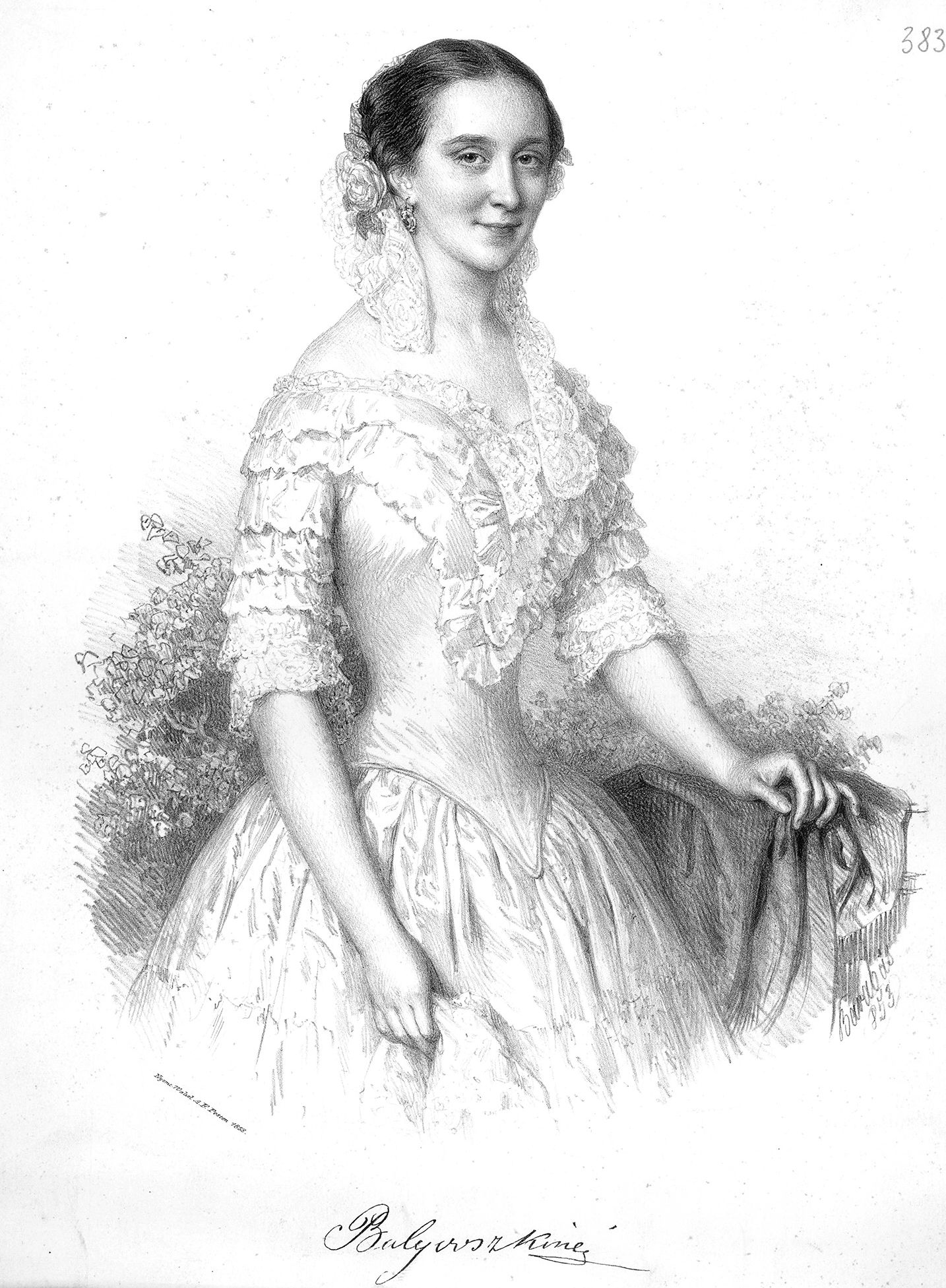
Miklós Barabás – Lilla Bulyovszky née Szilágyi, successful actress (Source: Wikipedia)
In 1848 she married Gyula Bulyovszky, a lawyer, newspaper writer and playwright, was among the extra-parliamentarian radical youths that drafted the 12 points of the March revolution. Although she was clearly talented, the actress felt she was being neglected in Pest, and continued her career abroad. She achieved great success in the German-speaking world under the name Lilla von Bulyovszky and became an actress of the Saxon royal court. King Louis II. of Bavaria was one of his fans. Her important roles included Ophelia, Mary Stuart and Sappho.
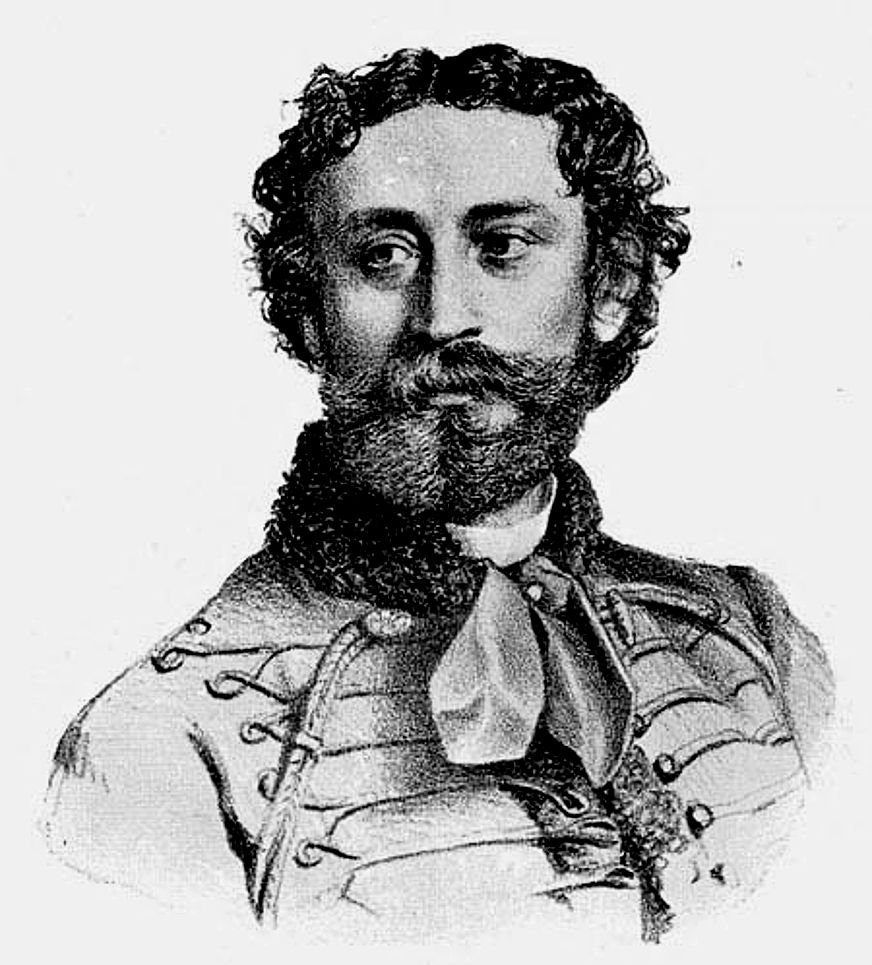
Portrait of Gyula Bulyovszky, lawyer and journalist (Source: Wikipedia)
However, in the 1870s she returned to Hungary and continued her career here. She lived a quiet retired life, spending much time n Budapest and Graz. The villa on Andrássy Avenue was built in 1884–1885 after the death of her husband. The success she experienced in Saxony and Bavaria played an important role in her life. It would seem possible this is why she chose the German Neo-Renaissance style. The main façade of the building is basically symmetrical, a trait typical of Hungarian villa architecture. The symmetry is broken only by the small tower on the corner.
The most characteristic element of the façade is the slight protrusion with an elegant loggia on the ground floor. Although the Palladio-themed loggia is more characteristic of Italian Neo-Renaissance buildings, it does appear on German Neo-Renaissance structures. (For example, in some deigned by Henrik Schmahl.) A large balcony rests above the loggia. A spectacular gable adorns the protrusion. Most of the original reliefs can still be seen on the gable. Sadly, the statue of the actress in the image of Sappho, one of her favourite, has been lost.
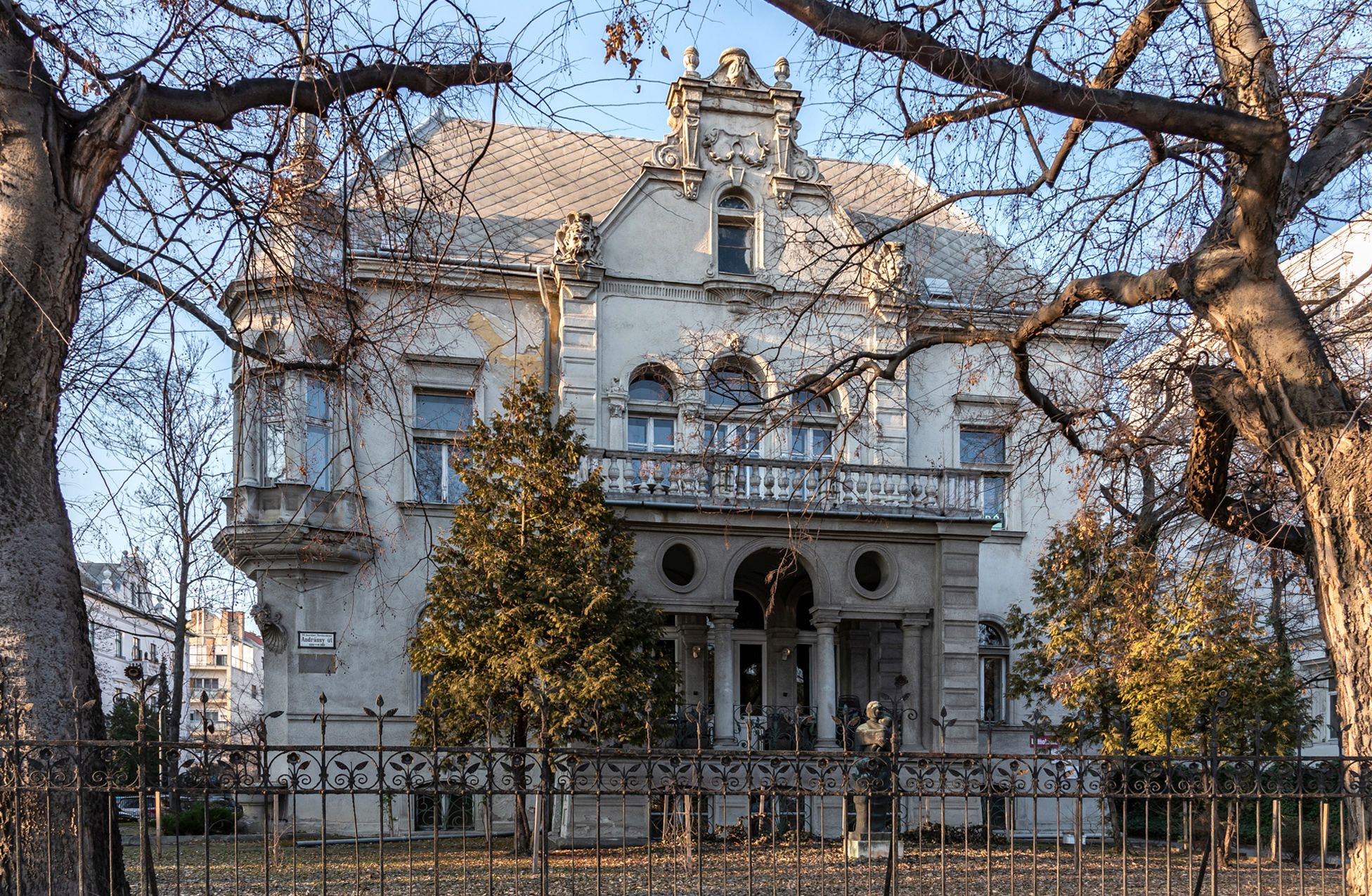
The main facade of the Bulyovszky villa (Photo: Both Balázs/pestbuda.hu)
Spectacular decorations also line the other facades of the building, mostly grouped around windows, doors, and the corner corners. Masks can be found at several points, referring to the owner's occupation. As in villas in general, the most representative spaces in the building can be found behind the main facade on the ground and first floors.
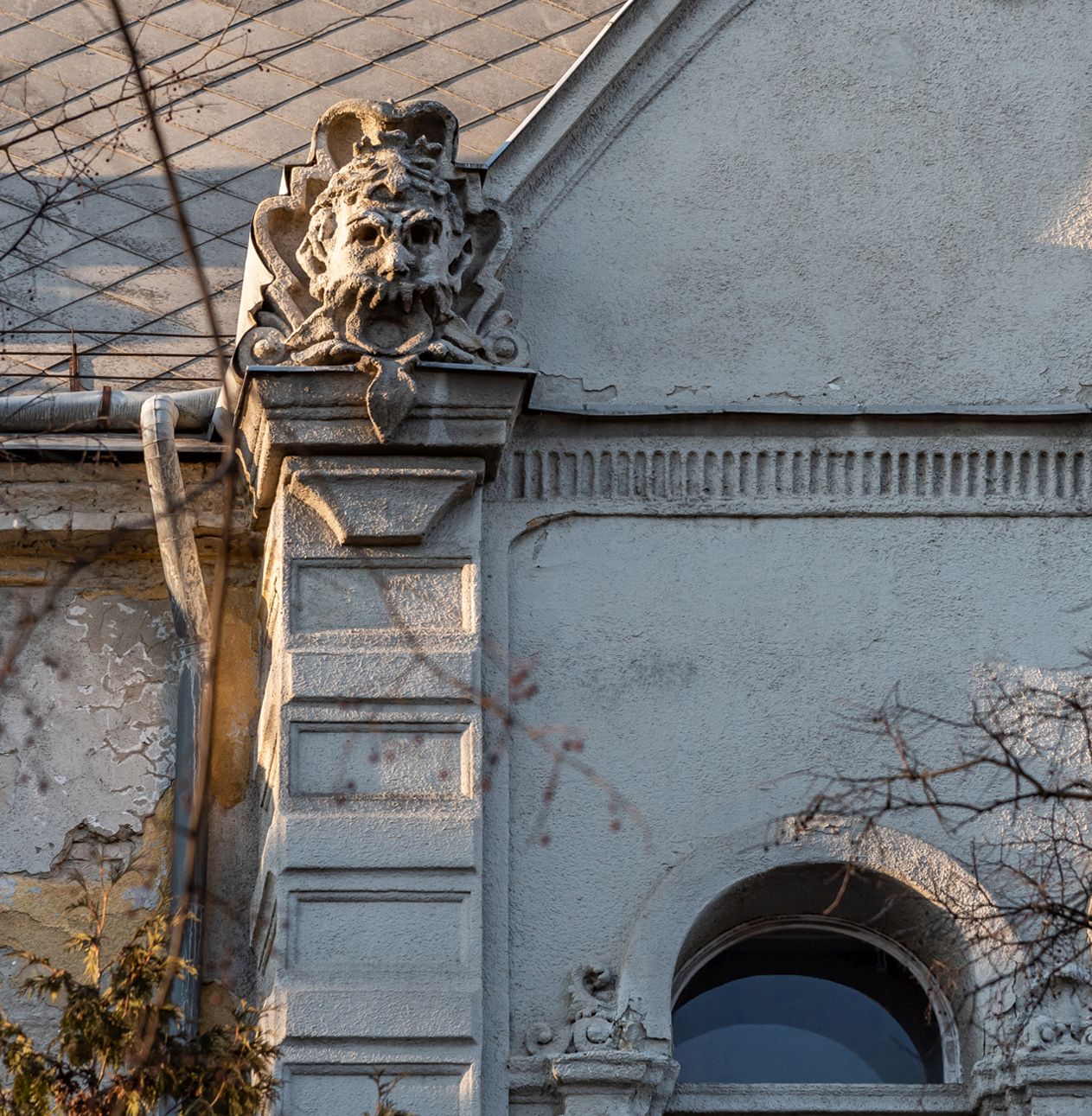
Masks decorate the gable of the main façade (Photo: Both Balázs/pestbuda.hu)
The elegant main staircase has survived in its original design. Barrel-vaulted ceilings with stucco decorations can be found in several rooms. (Unfortunately, the building cannot currently be accessed; thus only earlier photos and descriptions can be used to gain an understanding of the interior.)
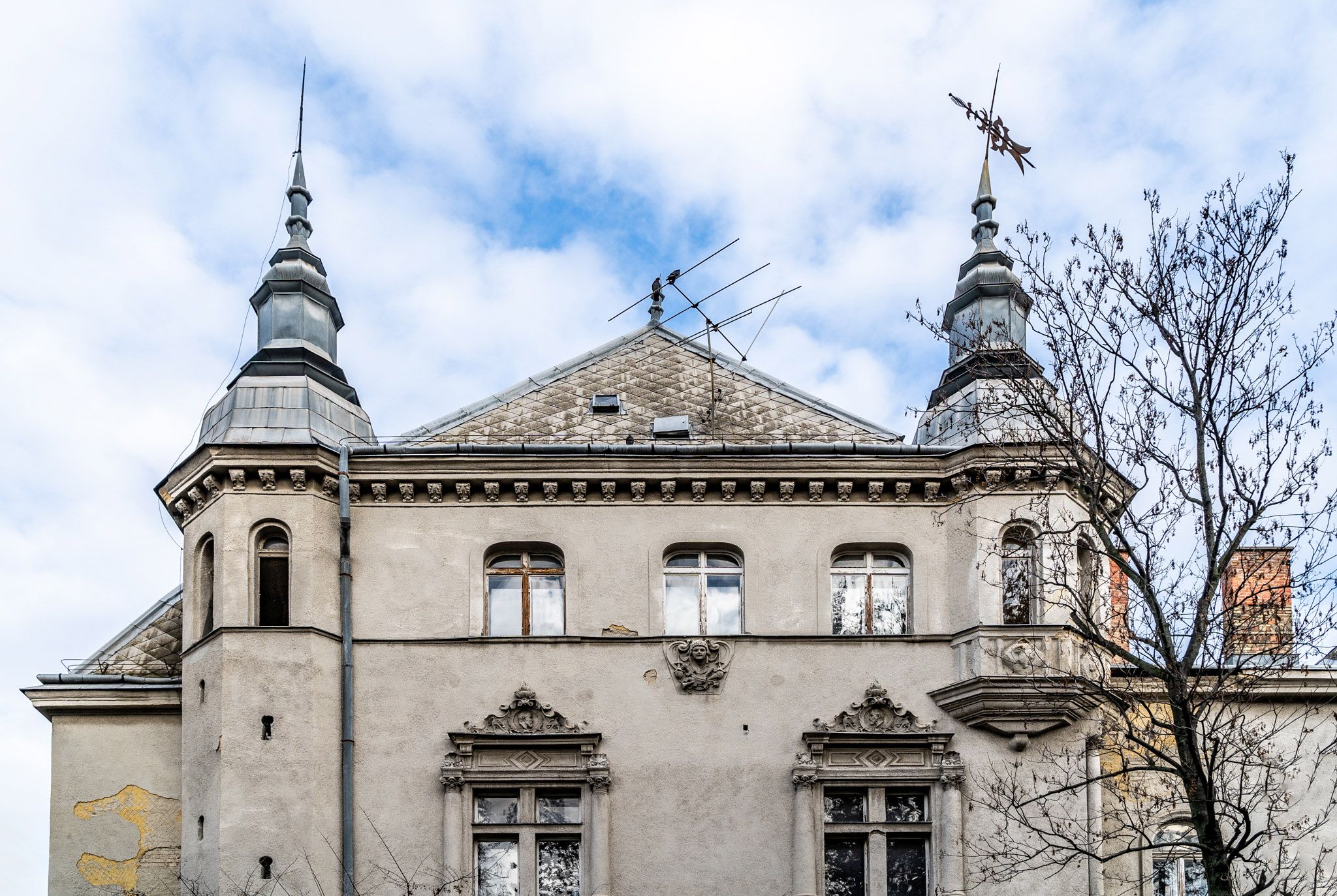
One of the side facades of the building with corner towers and articulated spires (Photo: Both Balázs/pestbuda.hu)
Lilla Bulyovszky née Szilágyi had always lived a charitable life, donating to support less fortunate actors and orphans. Since she had no children, she left her fortune to foundations supporting elderly actors and orphanages in Transylvania. No data on who or which organisation inherited the villa at her death can be found. It was nationalised in 1949 like most similar properties.
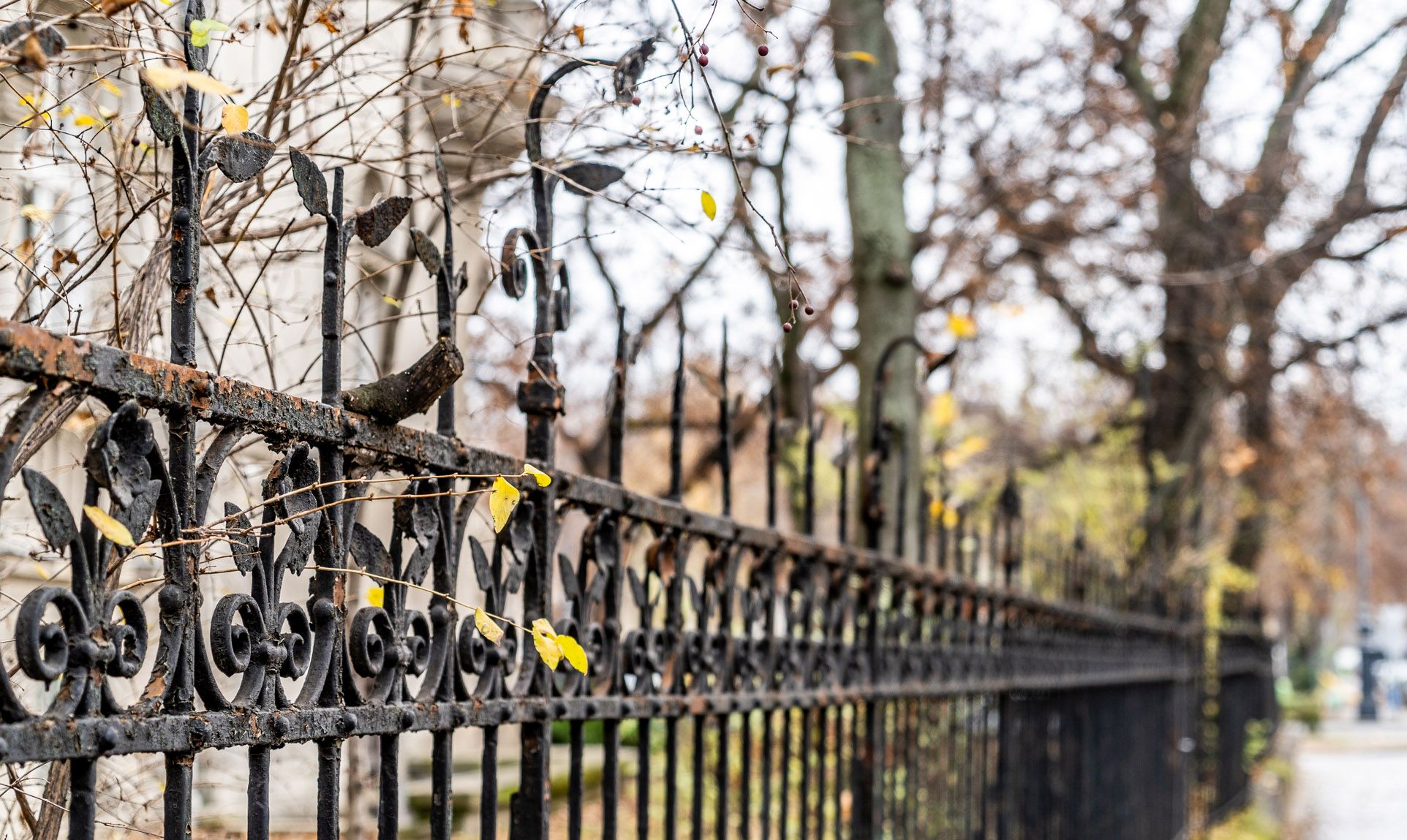 The wrought iron fence of the villa decorated with floral motifs (Photo: Both Balázs/pestbuda.hu)
The wrought iron fence of the villa decorated with floral motifs (Photo: Both Balázs/pestbuda.hu)
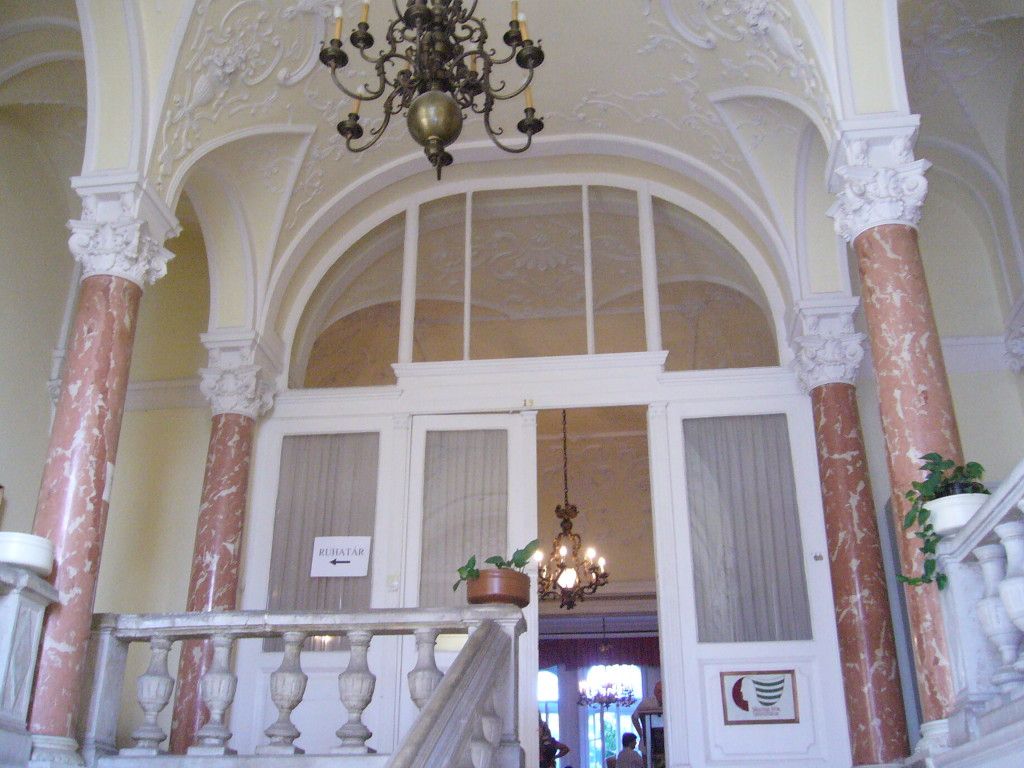
Staircase of the Bulyovszky villa (Photo: nokszovetsege.hu)
The building was given to the Democratic Association of Hungarian Women, which changed its name to the National Council of Hungarian Women in 1957. Its successor, which has operated under the name Hungarian Women's Association since the fall of communism in Hungary inherited the villa on Andrássy Road. The Hungarian Sex Workers' Association also used the building (its address is still listed on their website), as did the editorial offices of the weekly, Demokrata.
The Hungarian Chamber of Judicial Officers announced an auction of the property in October, which was withdrawn in early December. The Hungarian Women's Association sold its stake in the property. Fortunately, the villa is in passable condition but needs maintenance. The future is uncertain.
Fight for the Bulyovszky villa
After the fall of communism, the Hungarian Women's Association inherited the right to use the Bulyovszky villa at 124 Andrássy út, but acquired ownership of 55% only in 1998. The deed lists the title of the acquisition as a transfer, meaning the organisation received the valuable property for free.
The remaining 45 % of the 1839-square-metre corner building, accessible from two streets, has been shared by several organizations over the past two decades. The Hungarian United Nations Society acquired ownership by a free transfer in 2002, then the Magyar Ház Foundation, which published the weekly Magyar Demokrata, among others and the Foundation for the István Bocskai Free University in 2004. The ownership of the latter was cancelled in 2013, while the Magyar Ház Foundation purchased additional areas in the following years. However, according to the data in the deed, the foundation sold its share in February this year. The rights were purchased by MAZ Real Estate Zrt. The ownership of the asset management company was registered on 28 February 2020. Subsequently, the same company also bought the portion of the property owned by Horizont Handels und Industrie AG since 2015.
In recent years, the Hungarian Women's Association has tried to utilize the real estate by leasing it. However, the organization is heavily in debt, and creditors have initiated distraint proceedings. The auction announcement published on the website of the Hungarian Chamber of Judicial Officers on 12 October 2020 stated that MGV Magyar Gazdaság- és Vállalkozásfejlesztő Zrt. initiated the action against the Hungarian Women's Association, which was ordered by the Budapest City Court, to recover a claim of 67 million HUF. The notice also lists others who have filed claims against the debtor.
The Chamber of Judicial Officer appraised the real estate for slightly more than 559.5 million HUF. Valid bids could be made above 50% of the upset price. A bid of 279,772,920 HUF was placed on 2 December, but no one had the opportunity to counter-bid, as the auction, which was originally announced until 11 December 11, was cancelled.
The Hungarian Women's Association settled with its creditors and sold its share of the property. The association confirmed the sale to PestBuda, but did not disclose the buyer.
The most recent deed accessed on 12 December, shows that the creditors named in the auction, as well as others who had claims against the association, filed for the cancellation of distrait on 4 December, with one submitting the paperwork on 8 December. These are currently listed as comments. On 4 December 4, the Land Registry also received an application register DT Invest Kereskedelmi és Szolgáltató Kft., operating in 1 Sas Street, 5th Distrcit as an owner. This is likely the company that purchased the Hungarian Women's Association's stake in the property.
A few days later, on 9 December another comment was added in the name of Al Ramahi Mazen. This included a request for mortgage rights and a restraint on alienation and encumbrance. The applicant was born in Kuwait and came to Hungary to study in 1989. He operates several hotels in Budapest and is considered one of the most influential people in Hungarian tourism.
The comments suggest that the fate of the villa is yet to be decided, but several players are seeking to obtain it.
Cover photo: A gem of Andrássy Avenue, the Bulyovszky villa (Photo: Both Balázs/pestbuda.hu)

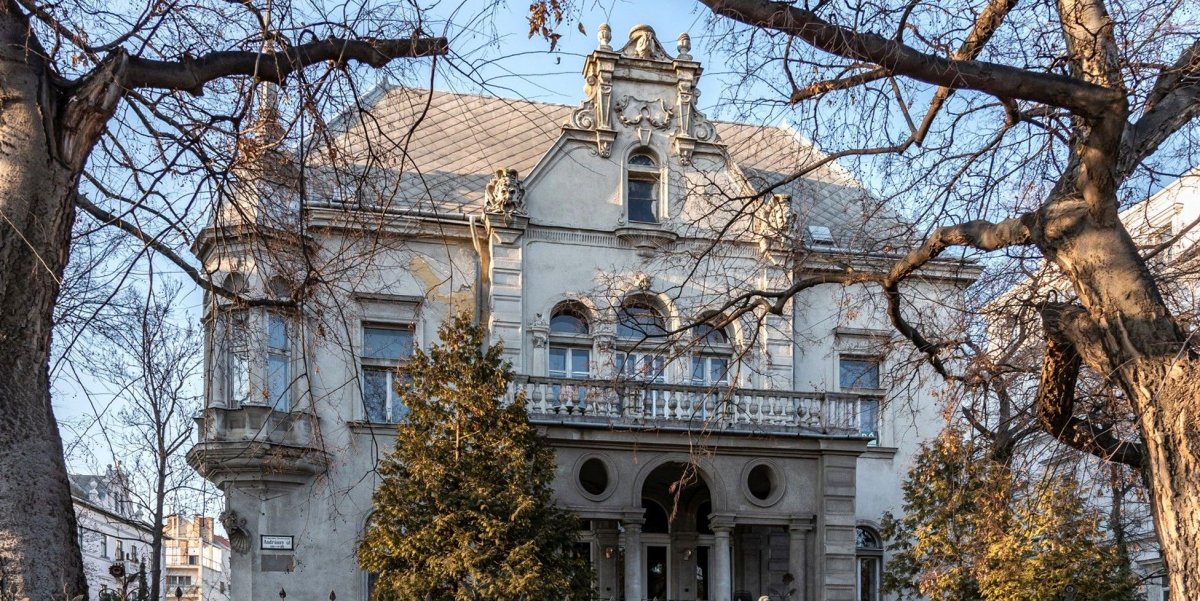



































Hozzászólások
Log in or register to comment!
Login Registration